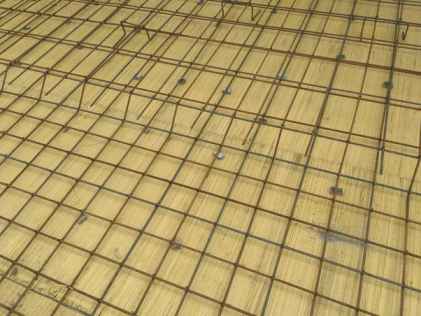Crank bars are also called bent-up bars.
To prevent this negative moment of hogging in some parts of the slab, it is provided at the top of the slab or at the top of the mid-support (if any kind of mid-support) and beams.
In this article you’ll learn:
- What is Crank Bar?
- Purpose of the crank bar.
- Merits of the crank bar.
- Lots more.
So, if you’re ready to go with the crank bar this article is for you.
Let’s get started!
What are Crank Bars?
Crank bars of various forms are included in the slab and other structural sections.

Typically, bars are bent at a 45° angle towards the supports.
In shallow beams with (an effective depth of 1.5 widths), the bent angle can also be 30°.
The maximum tensile stress (positive moments) occurs in the middle of the slab, whereas the highest compressive stress (negative moments) operates during both ends of the support.
As a consequence, bottom steel is necessary at the mid-span, while top steel eliminates negative moments at the supports. A crank bar is installed to protect the RCC slab from compressive forces.
Since these bars are included, the strength and deformation capacity of slabs with bent-up bars are greatly evaluated with respect to slabs without bent-up bars.
Purpose of Crank Bars:
- Crank bars are usually provided.
- To withstand a negative bending moment (hogging). To withstand increased shear force at supports.
- To limit the possibility of brittle failure of the slab-column connection. To reduce the quantity of steel used in order to save money on supplies.
Advantages of Crank Bars:
- When compared to chopped piece one, crank rebar minimizes the number of reinforced bars.
- It is also cost-effective for slabs.
- In the crank rebar, the number of seats in the slab is also decreased as compared to cut piece one.
Frequently Asked Question:
The bars are bent at an angle of 30° or 45° at the support area. The bend at the support bears the negative bending moment and resists the significant shear forces exerted at the edge region or support.
In slabs, crank bars are used for reinforcement.
D/sin45° – D/tan45° =1.42D – D = 0.42D are the formulas for computing crank length.
0.42D Crank Length.
Where D = Clear height of the bar = slab thickness – (top + bottom cover) – bar diameter.
Bending to 1/4 of the effective span from the supports is the standard procedure and the curved top bar forms a 45-degree angle with the horizontal.
It is advisable to crank a maximum of 50% of the bar to withstand the bending forces, ensuring that steel is included in each cross-section of the slab.
The shears coming close to the optional bent-up bar support are strong enough to withstand the force.
From an economic standpoint, we offer a variety of crank bars to keep these bars within a certain range.
Also read: Moment Frame | Rebars | Reinforced Cement Concrete | Concrete Slab | Moment Resisting Frame
Conclusion.
R.C.C beam or slab installation requires crank bars or bent-up bars because if hogging (negative moment) is not countered, the structure will fail or lose strength.
On the slab and beam support, the hogging bending moment will come.

Related Posts
Rock Quality Designation(RQD): Building Strong Foundations
Spread Footing
Masonry Cement
Plain Cement Concrete
Concrete Efflorescence
Concrete Pile
Stepped Footing
Fineness Modulus of Coarse Aggregates
Difference between Condo and Apartment